Right now I am in the Advanced Garde Manger class. So far we have made mascarpone cheese, lemon cheese, ricotta cheese, creme fraiche, mozzarella, smoked duck breast, tuna confit, gravlax, horseradish-beet cured salmon and a whole bunch of hors d'oeuvre.
The day we made the tuna confit, we took a fillet of ahi tuna, coated it in a citrus zest cure (containing a lot of salt and a little bit of sugar), cleaned it off and poached it in oil; it was really tasty. When I was making the gravlax, I had a little bit of salmon trim left over, so I coated it in this cure, and poached it in oil. It was incredible. All I had was one, tiny bite, but I liked it a lot.
I remembered that in the
French Laundry cookbook there is a recipe for salmon like this.
So, last Thursday I went to my
farmer's market looking for some salmon. I remembered that there is usually an American Indian selling some fresh, locally caught salmon. And I got some.

Here are the ingredients. Besides the salmon, there is caviar, navel oranges, grapefruit, lemon, lime, sugar snap peas, olive oil for poaching, vinegar for the navel orange confit, salt, pepper, sugar and chives for garnish.

The focus of this dish is definitely the salmon. This is Coho salmon from the Klickitat River in Washington.
Wild salmon has a very distinctive color. Farmed salmon is a more dull pink because the color is injected. This is about as good as the color can get.
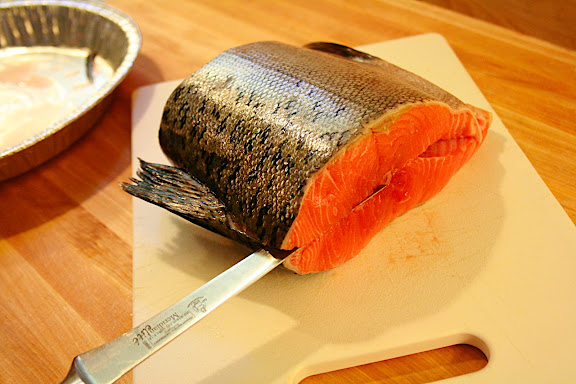
I cut the fillets off this section, just like I did ages ago with the bass.

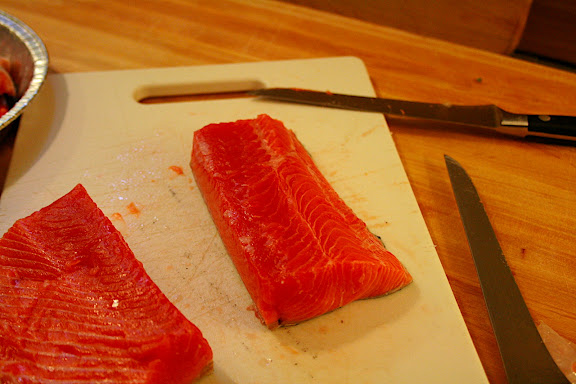
I cut the filet into sections that are relatively uniform thickness.

Here's the ingredients in the cure:
Zest of 1/2 orange, 1/2 lemon, 1 lime, 1/4 grapefruit.
1/3 cup kosher salt,
2 tablespoons sugar,
1 tablespoon white pepper.

Mix it up.
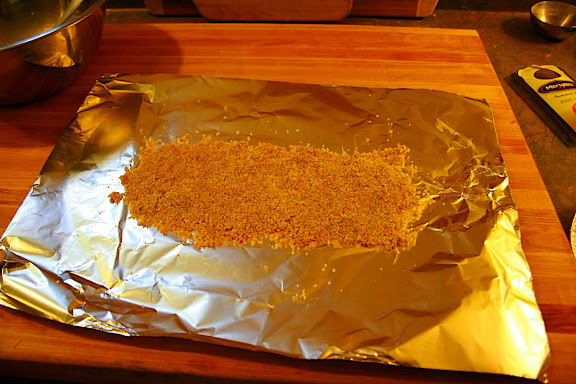
Lay the cure out on a piece of aluminum foil about the size of the fish.

Lay the salmon on the cure, and coat with the remaining cure.

Wrap the aluminum foil around the salmon and put on a sheet pan.

Cover with another sheet pan to weigh it down a bit. You want to keep it in the cure for an hour for every 1/4 inch of the fish's thickness. For this, it should be around four hours.
Navel Orange Confit:
Cut up the orange into the segments just like for
orange supremes.
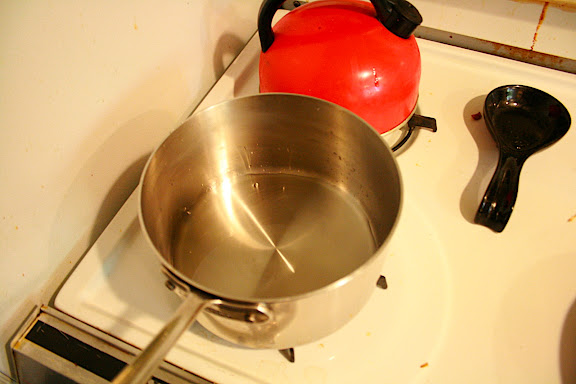
I then made a simple syrup, which is equal parts sugar and water. 1/2 cup sugar, 1/2 cup water, put it on heat, dissolve the sugar and just bring to a boil.

Pour the syrup over the oranges, and let cool before you refrigerate. They can be kept for up to a week in the syrup.
It is a confit because the oranges have been immersed in this liquid for flavor and preservation.
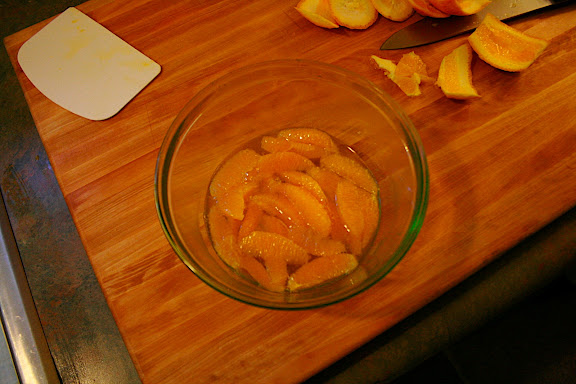
Coulis of Sugar Snap Peas
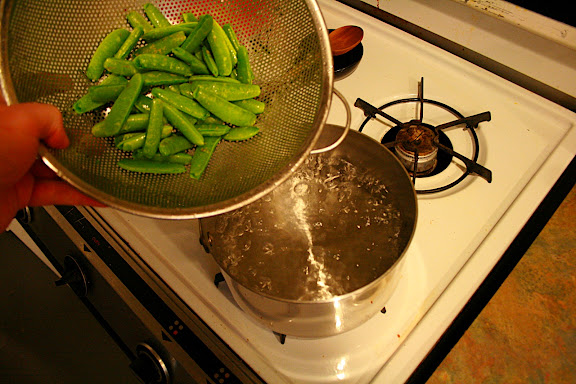
Rinse off the sugar snap peas and pull off the ends.
I blanched them in boiling water for about a minute and shocked in cold water to preserve the color.


A coulis is defined as a fruit or vegetable pureed to a sauce-like consistency.
So, puree the peas. A blender is best for this, if you have one.
Add a little bit of water (no more than a 1/4 cup) so it blends.


You don't have to strain it, but since i'm going to a Classical French cooking school, it's what I do.

Straining it gives it a really nice consistency and mouthfeel.
So that's pretty much it for the plate besides finishing everything off.

Before I get to that, I want to show another garnish. This is going to be citrus dust.
I took the zest of 1 orange, 1 lemon and 1 lime.

I took the zest and put it in a small pan and covered with water. When the water came to a boil, I drained off the hot water and put in fresh cold water and boiled it again. I boiled the zest of each fruit 3 times.



I then laid them out on paper towels to dry, and then on parchment to go in the microwave.

I microwaved them until they were dry. You can tell they're dry when they get brittle and don't hold the heat from the moisture.

After this, I just chopped them up with a knife until they were very fine.
Now, let's finish the plate.

Take the salmon out, rinse off the cure and completely dry with paper towels.


I cut the salmon into a small, two inch by three inch square.

I put enough extra light olive oil in a sauce pan to cover the salmon by at least an inch and heated it to 110 degrees.

My saucepan held the heat nicely, so I took it off the heat. Leave the salmon in for about 14 minutes.
You can see the thinner pieces here turning brighter, meaning they are cooked through. The salmon is done when it just flakes apart.

For the oranges, I just reheated them in a pan.

I did the same for the coulis, just reheated it and melted a few tablespoons butter into it.
And here it is.


I like this preparation because it maintains the great color of the wild salmon.
Poaching it in oil is so nice because it just melts in your mouth.

I wanted to pair a few different beverages with this to see how they did.
Here is a Pouilly-Fuisse Burgundian Chardonnay from Joseph Drouhin and Fred, a Belgian Style Golden from Hair of the Dog.
Something i've learned about food and beverage pairing is that if the food and the drink come from the same region, they probably go together.
I thought Hair of the Dog would be better for this dish because it's local. The fish came from just a few miles away, and the beer came from even fewer miles away, but this "Belgian style Golden" was a little strong. The color is a dark reddish orange, not something I would expect from a Belgian Golden (e.g. Duvel).
The Chardonnay was nice. It wasn't extremely complex, but it let the salmon stay as the dominant flavor, whereas the Fred has some strong yeastiness that overwhelms the flavor of the fish.
So that's it, Wild Coho Salmon poached with a citrus marinade.






















